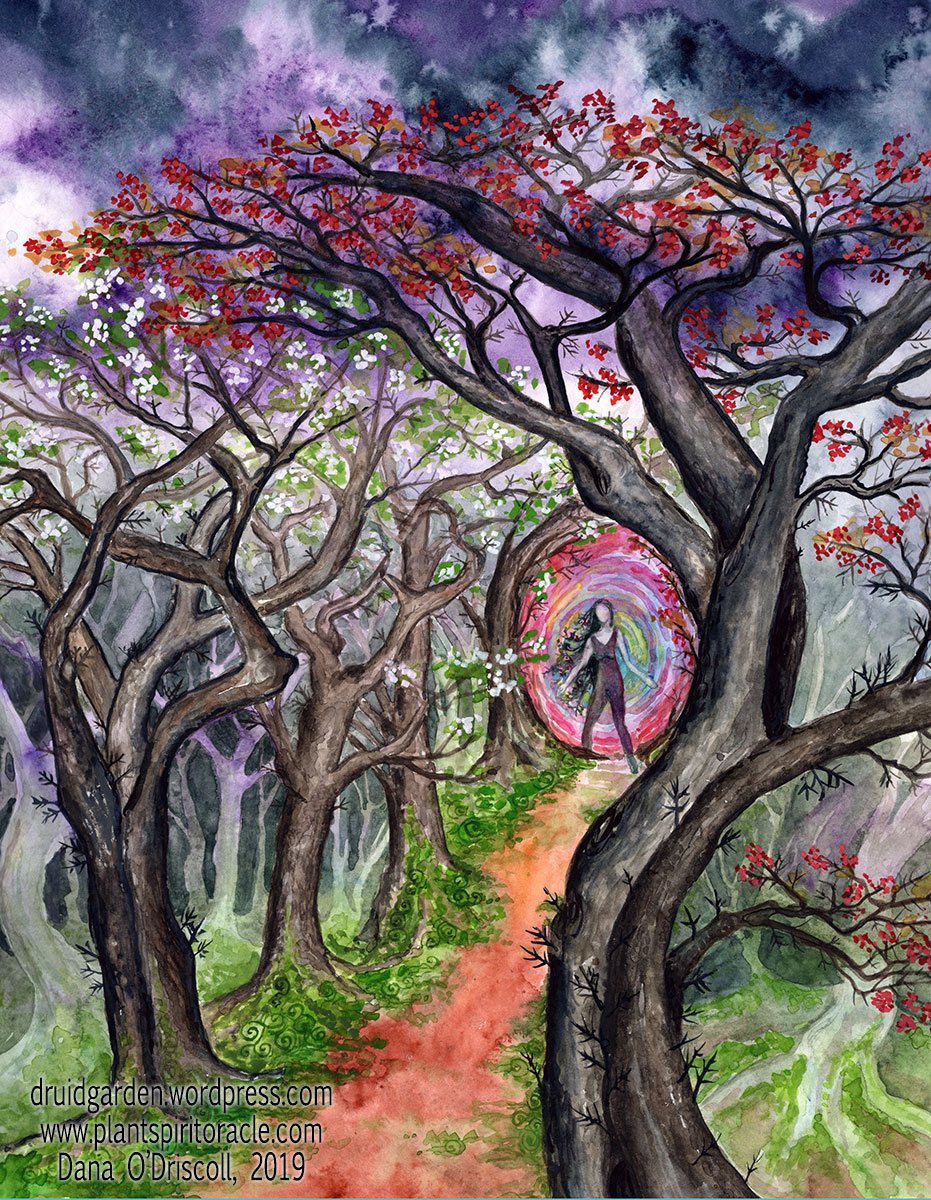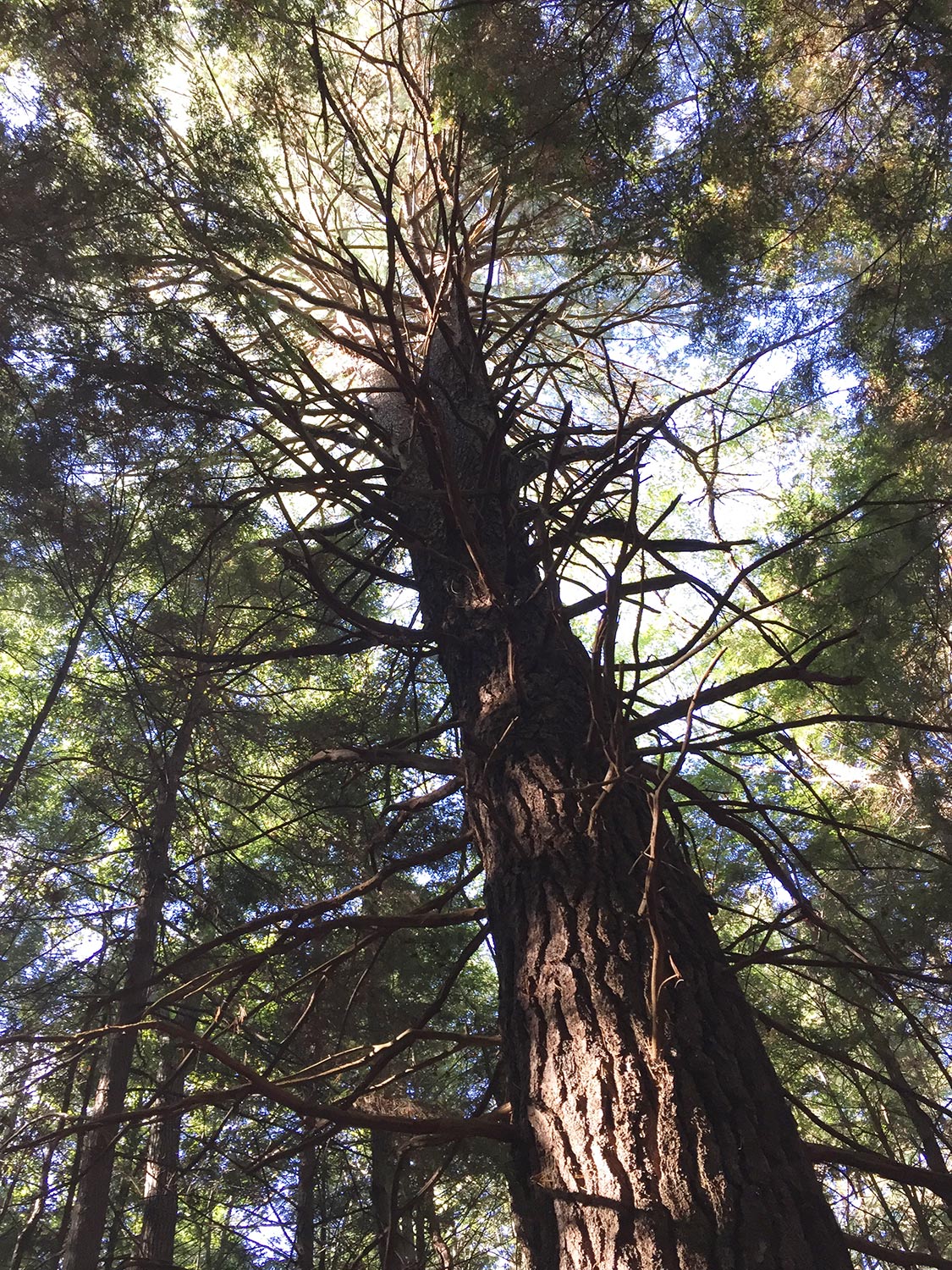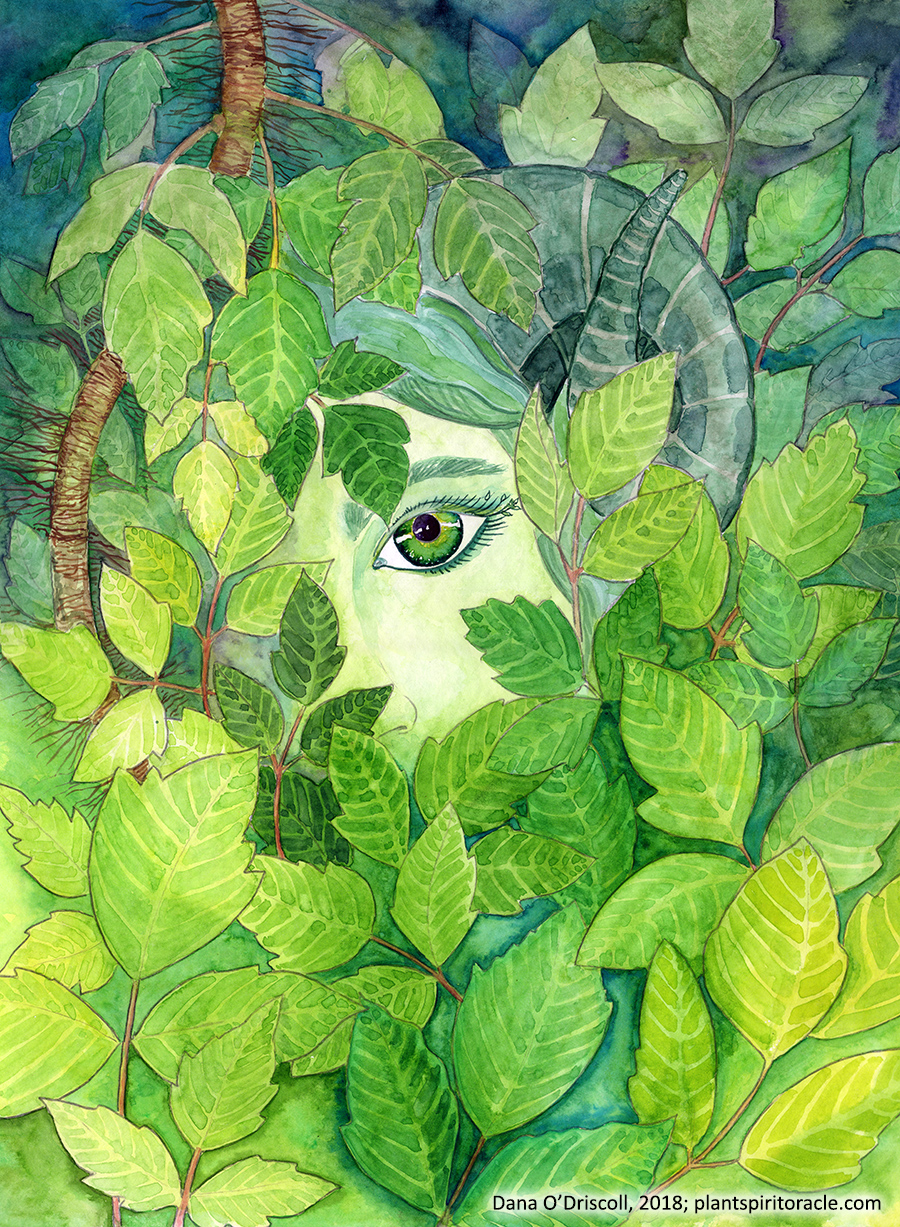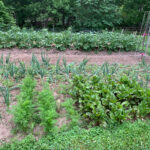As with any spiritual path, the question of how we build knowledge, what we believe, and where that knowledge comes from is important. I think it is particularly important to druids as we have so few fragments of the Ancient Druid tradition. We are constantly asking ourselves–where can we gain knowledge from? How do we build knowledge, and from what sources?
What is Gnosis?

Gnosis refers to “knowledge of spiritual mysteries.” Gnostic traditions are those rooted in the idea that knowledge can be gained through esoteric (inner) practices, such as communion with a deity, prayer, meditation, repetitive activity, dreams, and so forth, and that that knowledge is important and valued. Throughout history and in many different spiritual traditions, Gnosis was an important part of any spirituality. Seeking the mysteries on the deepest level often requires contemplation, silence, and communion with the living earth–as we have seen in monastic traditions throughout the ages. In the Gnostic traditions, this gnosis was said to be the most important knowledge one could hold and this belief transcends anything that might be provided by external sources. In other words, a Gnostic gets their messages and truths from spirit/deity above all else.
Gnosis is important to those on the druid path for several reasons. First, druidry (at least the kind of druidry I practice through OBOD and AODA) is non-dogmatic and focused on individuals’ spiritual development. This means, in AODA, for example, that druids work to hone their own personal spiritual development, spiritual expression, channel Awen, and wildcraft their druidry. These practices, which form the core of those practicing druidry (especially AODA druidry) require you to localize and personalize your understanding; and thus, are enriched by your own personal gnosis.
Most people who practice druidry use a combination of personal gnosis (inner knowing) with external knowledge seeking (outer sources). A good of this is through working with sacred plants: if you wanted to work with maple trees, it would benefit to you to read some books about maples: their ecology, their function in the ecosystem, how humans may have used them for food or medicine (such as tapping trees for syrup), and also traditional folk uses. But the key part of this is that you balance that outside knowing with your own direct experiences in nature: observation, meditation, and spirit communication. It is through these different inputs you can develop a personal spiritual path rooted in nature that also supports the development of personal gnosis.
Cultivating Personal Gnosis
Personal Gnosis can come in many forms as you travel along the druid path. These methods are fairly varied but many of them end up with similar results.
The first is our intuitive “knowing” or gut feelings. The reason they are called “gut feelings” is because we often experienced these in embodied ways–a sensation we get within the body, a knowing we have that cannot be shaken. Intuition/gut feelings are very important to those practicing spiritual paths and can be very useful to cultivate on your journey.
Another form of personal gnosis is Direct contact with spirits/deity who offer messages or teachings. This contact may be in many forms: voices, songs, feelings, visions, messages on the inner planes, teachings from spirits, etc. There’s an enormous amount to learn and navigate on the “inner” planes, and much of this is connected to the spirits you connect with and what they have to teach you.
Bardic arts is another area where personal gnosis may come to be. As you create, the awen, which druids see as a spiritual or divine force of creativity, will flow through you, inspiring you and deepening your understanding of the world. As Jung noted, creative expressions help you connect with your subconscious, and there is much wisdom to be gained in such a connection.
Dreams may be yet another area that you can connect both with your subconscious and with the larger sense of dreaming of the world. You can cultivate a dreaming practice where you delve deeper into the world of your dreams and work to understand the messages they provide you. (I highly recommend the teachings of Sarah MacLean Bicknell for more on a systematic, intuitive, and highly engaging dream-based practice).
Meditation is another area where you can develop a deep understanding of yourself, your life, and your spiritual path. Meditation quiets the mind and/or focuses the mind, allowing it to move in particular directions, connect with spirit and with the subconscious. Jung noted that dreams, creative practices, and meditation were powerful ways of getting in touch with our subconscious.
As you continue your studies, personal gnosis may come infrequently or regularly to you. It is a frequent occurrence for many more experienced practitioners but varies considerably by an individual. Some practitioners see gnosis and their interactions with the inner worlds/spirit/deity as the most central part of their practice. If you aren’t yet experiencing these things, continuing to quiet your mind, seek the sacred in nature, and engage in regular meditation is a sure path to receiving personal gnosis from nature and spirit. Keep at it and it will come!
Verification: Outer Plane Checks and Confirming Insights
Those new to these practices may question what they experience/hear/learn and question if these experiences are “real” or if they are all “making it up in their heads.” This is a critically important question to consider–even with trusted spirit teachers or deep gut knowing, it is always wise to test your insights.
The first question towards unpacking this is: where do the messages come from? There are two parts to this question to consider. The first is tied to what you believe–and thus, you will want to think about how your own experience fits in with your belief. If you are in the woods and are in prayer/meditation and receive a message, a Christian druid may believe that message came from God, while an Atheist druid may believe the message to originating from their subconscious. So understanding the “source” of personal gnosis as it fits your belief is important. The second part of the question is also tied to the source and your level of trust. Did you receive this message from a trusted inner contact, one you have experience with, or was this a random spirit or entity? If you’ve developed a longstanding relationship with a spirit/deity and that connection is healthy, there is probably little reason to question what you received. But if you aren’t sure of the source or if this is a new spirit, there is great cause to be wary.
Further, there are numerous questions beyond questioning the source of the message. What does the message say? What would acting on the message do, if anything? Does that action make sense? Is that message asking you to behave in a way that is your best self or not? These kinds of questions are important to ask, particularly as you are starting out–we tend to be very trusting early on our journeys, and that can get us in some trouble.
Outer Plane Checks and Confirming insights. One of the ways to “verify” personal gnosis is by asking spirit/deity for what is known as an “outer plane check.” This is some kind of external message or verification from spirit/deity and it can vary quite widely but it is somehow rooted in our physical reality. Part of what you will receive as verification again goes back to your own personal belief system and how much skepticism you have. Here are some examples:

Some druids would consider an outer plane check confirmed if they were in nature, received a clear message, asked for an outer plane check, and then had a very clear sign from nature–such as a flock of wild turkeys walking through the center of their grove, a large eagle flying overhead, or a ray of sunlight shining through the clouds. This kind of confirmation may not occur immediately but should be obvious when it happens. For example, I was making a very serious life choice some time ago, a choice that had a significant impact on the future of my life. After hearing guidance from the spirits and making a tentative choice, I asked spirits for confirmation that it would be the right one. A bad storm blew through and dropped a big tree away from my house–a clear message confirmed. They aren’t always that drastic, of course.
Having a human (friend, mentor, even stranger) confirm a message is another path. Some druids would consider it confirmation if a friend or mentor shared a similar experience; that allows them to confirm and understand their own experience/message Some druids would consider it confirmation if a similar message came through to them by another means (friend, mentor, someone sending them a link, etc). For example, after receiving a message upon which you might act, going to a friend for divination (without revealing any details) could be a useful way to confirm. Some druids would want physical confirmation, such as being able to read or see something that confirms what was shared (not always possible, but useful for things like past life regression).
Sometimes the best way to verify a message is simply time. Wait to see what happens, seeing if the insights or understanding gained comes to be.
Gnosis without verification: Some Personal Gnosis may not be able to be verified with an outer plane check, but there are still other ways you might think about this in more depth. Here are some useful ways of thinking about the information you receive:
- Do you trust the source? If this is a deity or spirit that you have a deep relationship to, it is probably much more trustworthy than from someone you have no relationship to
- Does the message/insight/information make sense? If the information is outlandish or uncharacteristic, it is a good idea to question it.
- How strong was the message? How did you feel after you received it?
- Were you protected when you received it? E.g. did you do a daily protective working (such as the AODA’s Sphere of Protection) or were you in a sacred grove/sacred circle? This also makes a difference.
Sometimes personal gnosis cannot be verified and must be taken on faith. More interactions over time with the world of spirit are certain to deepen this knowledge.
Unverified/Unverifiable/Unsubstantiated Personal Gnosis (UPG)
While personal gnosis is a critically important part of our own spiritual experiences, it can lead to some trouble, especially when people begin to pass off their own personal gnosis as fact. In the broader neopagan community, the term is usually “unverified” or “unsubstantiated” personal gnosis, which refers to matters of spirit that cannot accurately be verified using physical means. It is often, but not always, used in a negative way for at least two reasons.
The first is that UPG can be dangerous when used in groups and can be used as a means of control of individuals and groups. If one leader or small group claims a direct connection with a deity or set of spirits, and only that leader has a connection and receives messages, then anyone who follows that leader can be led deeply astray. They can become enthralled by the leader’s visions and there is no way of verifying the visions. This happens in all sorts of spiritual traditions (think about your typical “cult” here), and unfortunately, does occur within neopaganism. Thus, it is really important that when you are listening to the words of others, you pay attention to where they are getting their information–is it UPG? What does your own gut tell you? It is good to take someone else’s personal gnosis with a very heavy dose of skepticism, particularly if they are using it as a means to control. Ask them where the information comes from, and distance yourself if necessary.
The second place that you often hear about UPG being a negative thing is particularly tied to movements like Celtic Reconstructivism or other reconstructivist movements. Reconstrutivist movements focus on historical accuracy and recreating/resurrecting lost traditions, and thus, UPG is rarely welcome in such communities because the emphasis is on recreating ancient traditions. In this case, the community’s values are focused on historical sources, not UPG. Druid revival orders, such as AODA or OBOD, don’t worry as much about this issue as we don’t have less than 9 pages total of preserved works from the ancient druids, but it is very important to understand that different traditions value different things–and to respect those differences.
Sharing Personal Gnosis
Given the above, one of the things that gets tricky in the broader druid community (and where the negative spin on UPG comes from) is when individuals intentionally or unintentionally pass off personal gnosis as truth, fact, or historical fact. This is something you will want to watch out for in your own interactions.
In sharing your own personal gnosis, I recommend that you make it clear that this is your own gnosis/understanding that comes from spirit. It is easy enough to signal this when you are sharing with phrases like, “in my experience” or “In my interactions with spirit/deity” and simply clarify that this is coming from your personal gnosis. That way, when you are sharing, it is very obvious where your information comes from. This makes you a more trustworthy person and allows you to have positive, healthy interactions with your broader spiritual community.

Some personal gnosis is specifically given to you to share. Our world is in a tipping point, and spirits are eager to help humanity transition away from our destructive path. Thus, you may start getting messages with the idea that they need to get out there. I point to my Plant Spirit Oracle as a good example of this. It was very clear to me from the beginning that this project and set of journeys were meant to be shared. In my book, I made it very clear that this project–the images, meanings, divination system–was my personal gnosis. I shared exactly how I came to the meanings and images, and with that, I feel like my ethical obligation is complete. People can choose to use it or not, and they know where it came from because I’ve been upfront about it.
On the other hand, not all personal gnosis is meant to be shared. You will usually have an intuitive sense (if not a direct message from spirit/deity) about what can and should not be shared. Some may be shared with those who are mentors or friends, while other personal gnosis may be appropriate for more public sharing. There is such a thing as “talking the magic out” of something, meaning that if you had a very deep personal experience and you begin sharing it widely without taking the time yourself to work with it and unpack it, you may never reap the full benefits of the experience or message. Thus, I recommend always sitting with insights and messages for some time, and then if you are going to share, share carefully.
In reading and responding to others’ personal gnosis, you can ask the simple question–where did this information come from? Are they indicating that they had a personal experience, they were taught this, this is part of a family tradition, part of some larger tradition, or so on? If they aren’t sharing where it came from, you can gently ask (but be kind, a person is choosing to share a personal thing and we want to always honor that sharing). Part of the reason it is good to recognize when someone is sharing UPG is for reasons I outlined above–someone may claim or use UPG (or claims of UPG) for personal gain. Thus a “grain of salt” approach is useful–again, think about who is sharing and if they are trustworthy.
Personal Gnosis is Personal
One of the most important issues with sharing is to understand that personal gnosis is personal. Your relationship with that plant/spirit/deity may be very unique. It may not align with what others are sharing–and that’s totally ok.
Think about it this way–you are a different person in your professional workplace, with your parents or siblings, with your childhood friends, or with your druid grove. In essence, you are many sides of the same person. This happens in the spirit world as well. The spirits will work with you as an individual, and the insights you receive may be different than what others experience. Your interaction with spirits is based on a host of factors: how long have you been doing this? What is your relationship? How deep is it? How much do you walk your talk? What have you done on behalf of these spirits/land? and so on.
Thus, if your own personal gnosis differs from someone else’s, it doesn’t mean that either of you is wrong, but rather that you are both experiencing different aspects. I see this a lot with plants and trees. Trees like Hawthorn or Elder, for example, have a wide range of personalities and magic, and what side of those trees you see may be very much based on who you are and what relationship you cultivate. You may read one thing in a book about Elder being a certain way, and experience a very different thing. This doesn’t mean you are wrong; it just means that Elder, to you, appears and offers a different set of teachings. All of this is part of why it’s really important to understand when others are offering their own UPG.
Personal to Community Gnosis

In some cases, personal gnosis transitions to community-based gnosis or even cultural gnosis if enough people receive the same kind of messages. For example, there are a number of people in the druid, herbalism, and bushcraft communities that have been individually receiving messages and teachings from the Poison ivy plant. After sharing notes and experiences in smaller groups, these teachings are starting to be transmitted via classes and events and a new name for the plant (Sister Ivy) is being used pretty widely. All of us who have worked closely with her, over a period of time, have recognized the need for her teachings in this particular age, and have spread the new name for her, more fitting of the role she wants to assume. At this point, after almost 30 conversations with different people about their individual experiences, it seems pretty clear to me that Sister Ivy has a message and set of teachings she wants in the world right now. Thus, what was personal gnosis to some individuals is now being shared more widely–because that gnosis was consistent among individuals that received it and the information shared makes sense. The key here is that this same Personal Gnosis has been experienced by a number of different people independently, and, most importantly, nobody is using that personal gnosis to control others. It is something that is simply being shared, understood, and valued.
Conclusion
A spiritual path is so much richer when we are able to work effectively with our own personal gnosis as part of our path. By using the practices I’ve outlined here, you can develop your personal gnosis, avoid some of the pitfalls, and learn when it is appropriate to share.




Thanks so much for this post Dana. As an AODA and GCC member, I appreciate you diving into this topic! I am inspired by your commitment to listen deeply to the spirits of the natural world. Any resources you could share about contact with poison ivy?
Hi Kemp, thank you! Did you see my post on Poison Ivy? Here’s some of what I regularly share about her. I have a lot more, but this is a start: https://druidgarden.wordpress.com/2017/09/24/poison-ivy-teachings/
I can also send you some other information if you email me or contact me through the AODA forums.
No I don’t think I saw that post. I will start there and will ask through the forums if I want to know more. Thanks for offering!
Sounds great :).
Thank you for diving into this topic with grace and eloquence. It is a great reminder to sit and contemplate my relationships with the lovely nature beings I have connected with through meditation and in my dreams. The question I will ask myself, Is how to move forward with these relationships for the highest good for all involved? I often get excited and want to share without fully absorbing all the information. This reminds me to slow down and integrate the information.
Hi Diana, yes! I think that’s the key. Spend some time in integration, spend time with the outer and inner plane checks, and figure out exactly what can be shared and how. Your intuition will be useful for this–as will the spirits of nature themselves. They can guide you in this regard.
Reblogged this on Rattiesforeverworldpresscom.
[…] UPG and Me: On Gnosis, Personal Gnosis, and Knowing in NeoPagan Practices […]
I really appreciated receiving this blog post today. So much to think about. thank you
You are most welcome, Ruth! 🙂
[…] Most people who practice druidry use a combination of personal gnosis (inner knowing) with external knowledge seeking (outer sources). A good of this is through working with sacred plants: if you wanted to work with maple trees, it would benefit to you to read some books about maples: their ecology, their function in the ecosystem, how humans may have used them for food or medicine (such as tapping trees for syrup), and also traditional folk uses. But the key part of this is that you balance that outside knowing with your own direct experiences in nature: observation, meditation, and spirit communication. It is through these different inputs you can develop a personal spiritual path rooted in nature that also supports the development of personal gnosis.“Continued”https://druidgarden.wordpress.com/2022/03/06/upg-and-me-on-gnosis-personal-gnosis-and-knowing-in-neo… […]
I was fortunate in meeting George King in 1958, with information you could relate to Gnosis.
Coming from a Cosmic Master there is no basis for doubt.
You would like the bioigraphy.
Hi Gratzite, I would love to hear more about your meeting :). Please share!
What more is there after my website?
I published a book “Metaphysics and The New Age”still on Amazon.
Sinc then the biography of the Master George King has been recently published and is a mine of information on the sacrifices and metaphysical operations required for the foundation of the coming age.
I forgot about the meeting.
In 1958 UK I saw “The Cosmic Voice’ magazine about voices of Venus and Mars.
I travelled 200 miles, by car and train then underground, to Caxton Hall in London.
George King offered accomodation for the night and we spent the late hours in conversation. I learned things not acknowledged by the directors of the Aetherius Society.
The Twelve Blessings were offered and accepted.
My book was silently ignored.
Thanks Dana. I love your writing. The themes suit my soul. I’m soothed to know others receive messages like this and appreciate the time you take to share your wisdom. Love the artwork too.
Hi Sepentina, thank you so much for your kind comments :).
[…] UPG and Me: On Gnosis, Personal Gnosis, and Unverifiable Personal Gnosis in NeoPagan Practices ̵… […]
[…] UPG and Me: On Gnosis, Personal Gnosis, and Unverifiable Personal Gnosis in NeoPagan Practices ̵… […]